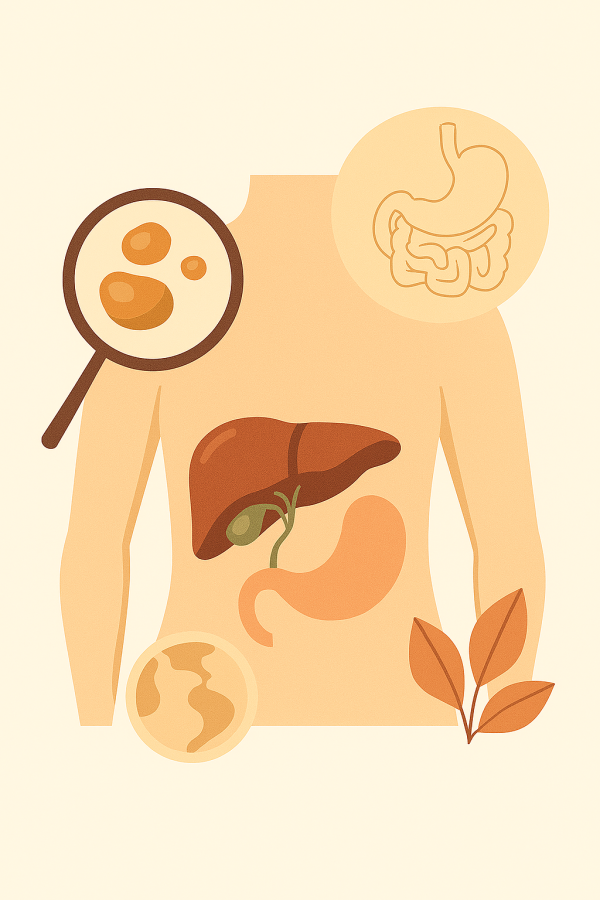Gallstones are one of the most common digestive issues worldwide. While many people may never know they have them, others experience sudden, severe pain that requires medical attention. This guide explains what gallstones are, why they form, how they’re treated, and what you can do to lower your risk.
📌 What Are Gallstones?
- Gallstones are hardened deposits of bile — a digestive fluid made in the liver and stored in the gallbladder.
- They can range in size from a grain of sand to a golf ball.
- Some people develop just one, while others may have many.
- The medical term for having gallstones is cholelithiasis.
⚠️ Symptoms of Gallstones
Most gallstones are “silent” and cause no symptoms. But when a stone blocks the bile ducts, it can trigger a gallbladder attack (also called biliary colic).
Common symptoms include:
- Sudden, intense pain in the upper right abdomen or center of the abdomen
- Pain that may radiate to the right shoulder or back
- Nausea or vomiting
- Indigestion, bloating, or intolerance to fatty foods
Seek immediate care if you experience:
- Severe abdominal pain that won’t go away
- Jaundice (yellowing of skin or eyes)
- Fever and chills (possible infection)
🧪 Causes and Risk Factors
Gallstones form when bile becomes imbalanced. This can happen if:
- Too much cholesterol is in the bile
- Too much bilirubin (a substance from red blood cell breakdown) is present
- The gallbladder doesn’t empty properly, causing bile to stagnate
Risk factors include:
- Being female and over 40 years old
- Pregnancy or hormone therapy (estrogen increases risk)
- Obesity or rapid weight loss
- Family history of gallstones
- High-fat, low-fiber diet
- Certain medical conditions (diabetes, liver disease, blood disorders)
🩻 Diagnosis
Doctors may use:
- Ultrasound (most common test)
- CT or MRI scans
- Blood tests (to check for infection or liver problems)
- Endoscopic procedures (ERCP) to locate and sometimes remove stones
💊 Treatment Options
- No treatment: Silent gallstones often don’t need intervention.
- Surgery (Cholecystectomy): The most common treatment; removes the gallbladder entirely.
- Medications: Bile acid pills may dissolve stones, but this is slow and stones often return.
- Endoscopic removal: For stones lodged in bile ducts.
Most people live normally without a gallbladder — bile flows directly from the liver to the intestine.
🌱 Prevention Tips
You can’t always prevent gallstones, but you can lower your risk by:
- Maintaining a healthy weight
- Losing weight gradually (1–2 pounds per week)
- Eating a high-fiber diet (fruits, vegetables, whole grains)
- Choosing healthy fats (olive oil, fish oil) instead of fried or processed foods
- Staying physically active
✅ Quick FAQ
Can gallstones go away on their own?
Silent gallstones may never cause problems, but once symptoms appear, treatment is usually needed.
Is surgery always required?
Not always — only if gallstones cause pain or complications.
Can I live without a gallbladder?
Yes. Most people digest food normally after gallbladder removal, though some may experience mild diarrhea.
Final Thoughts
Gallstones are common, but not always dangerous. The key is recognizing symptoms early and seeking medical advice before complications arise. With healthy lifestyle choices, you can reduce your risk and support long-term digestive health.

